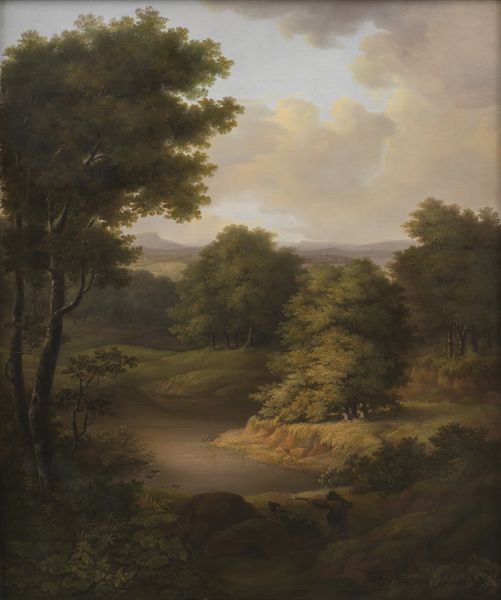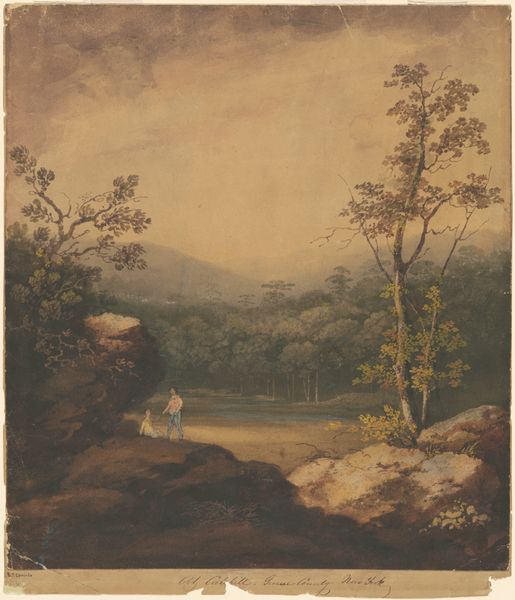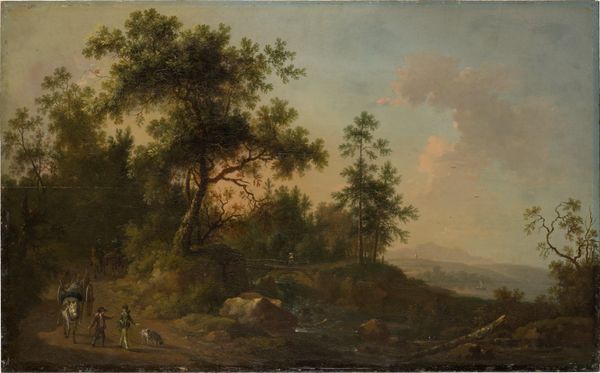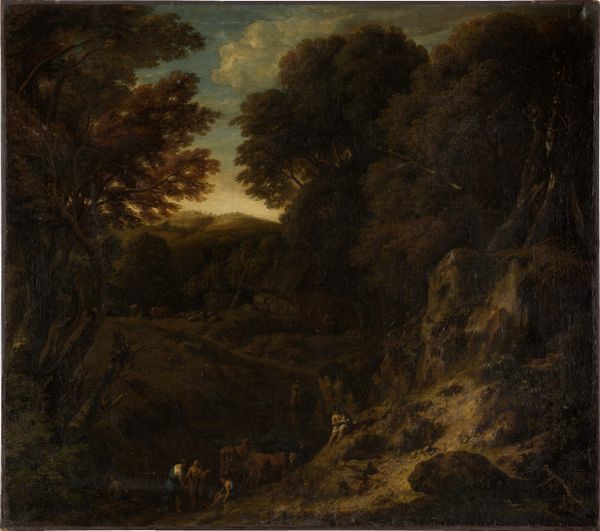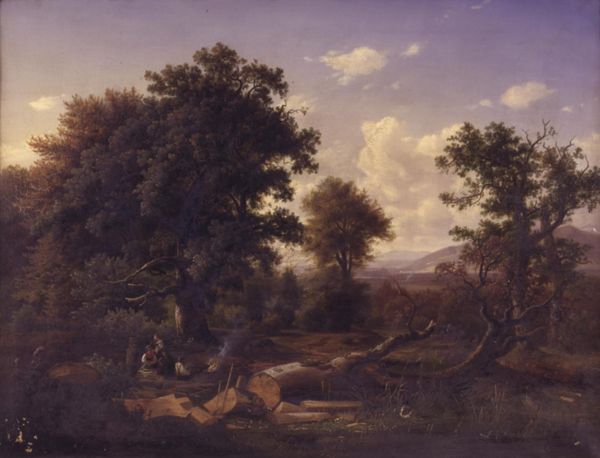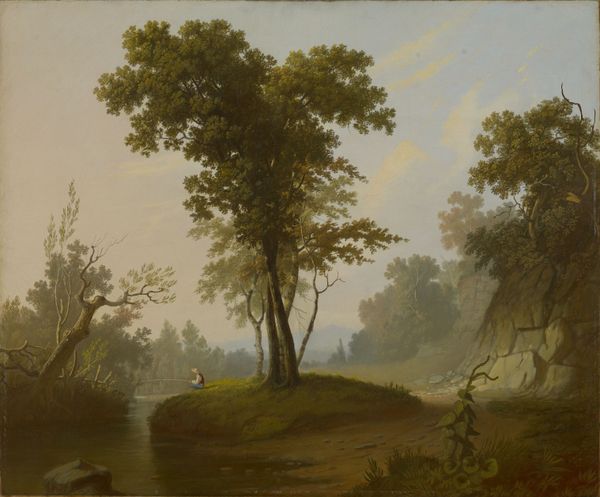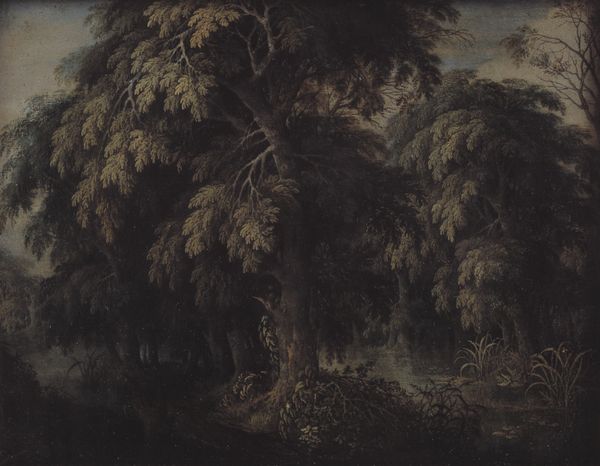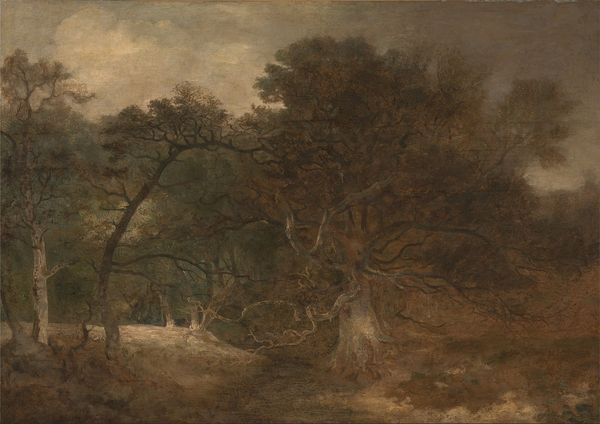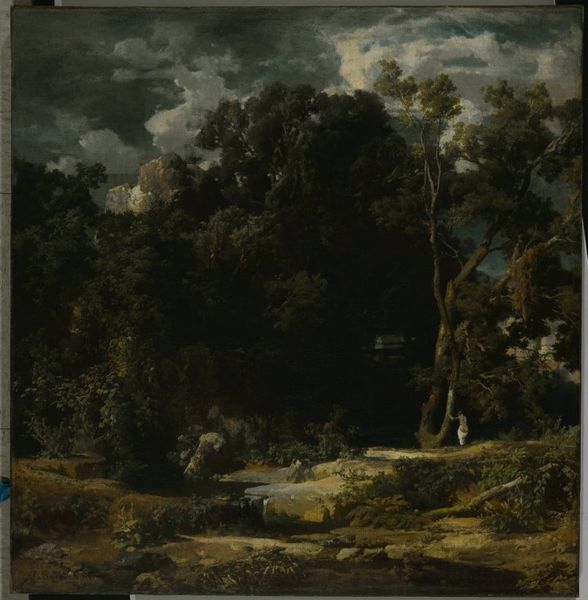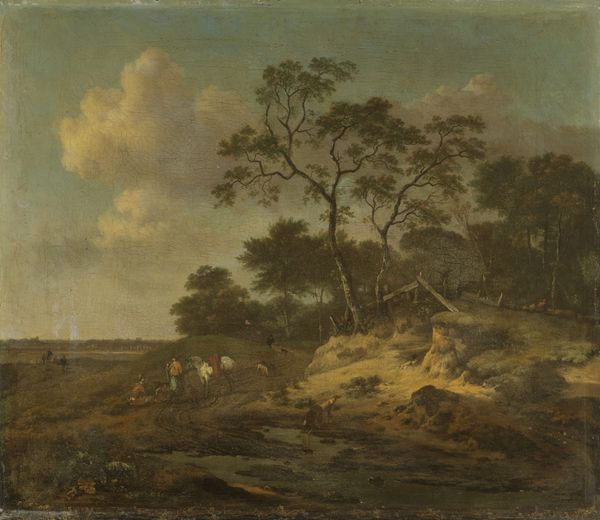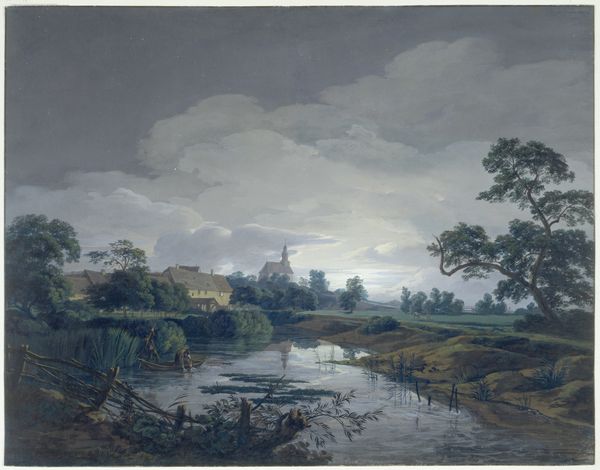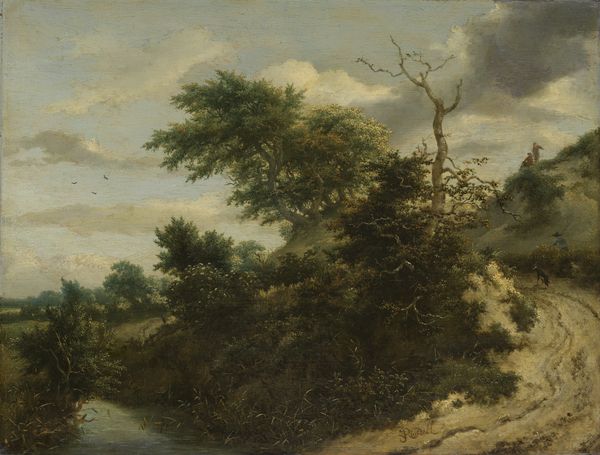
painting, oil-paint, canvas
#
baroque
#
painting
#
oil-paint
#
landscape
#
oil painting
#
canvas
#
genre-painting
#
realism
Dimensions: 44 cm (height) x 50 cm (width) (Netto)
Curator: Let's take a closer look at Adam Pijnacker's "Southern Landscape with Herdsmen," an oil on canvas piece dating from 1665 to 1670. Editor: Wow, it's got this wonderful gloomy romance to it, doesn't it? Like a scene plucked right out of a whispered fairytale. I want to curl up in that dark copse. Curator: It's fascinating how Pijnacker uses the oil medium here to really distinguish between textures; from the roughness of the tree bark to the smoothness of the distant landscape. He was playing with expectations for how we experience work and leisure. Editor: And the light, right? Notice how the muted palette focuses all of our attention on these figures—the herdsmen and their animals—who are almost swallowed by the shade. A commentary on the precariousness of their lifestyle maybe? The mountains loom, all but erasing signs of human presence beyond this clearing. Curator: Absolutely, we have this dialectic occurring where man’s interaction with the natural world has created this very imbalance. The trees have been cut to make way for these herdsmen and yet the mountain’s seem unmoved and eternal, really speaking to cycles of production and depletion of natural resources at play during this time period. This connects to genre painting practices too. Editor: Yes! They are paused for us, they rest for the land, too, and Pijnacker freezes it so delicately that even with their weariness we almost expect that they smile back at us. Curator: Consider the intended market as well; likely intended for wealthy merchant homes in Dutch cities, who probably knew nothing of this labor first hand, it's interesting how the painting presents, at once, a vision of both serene naturalism and labor exploitation in Southern landscapes during a rise in urban wealth. Editor: That kind of irony almost enhances the romanticism of it, in a strange way. Maybe those far-off mountain peaks were more a vision than an actual location? It is stunning though—a captured, fleeting breath. Curator: It's a fantastic painting to consider in its historical and material conditions; its reception within the expanding market economy of 17th century Dutch painting is also very important. Thanks for that, I'm left with some thought provoking connections here. Editor: And thank you! It’s just the sort of thing that inspires you to see more beyond the frame.
Comments
No comments
Be the first to comment and join the conversation on the ultimate creative platform.

